Research shows that 80% of visitors who leave during this stage won’t return, making this a critical make-or-sayonara moment.
The purchase or decision stage is where visitors are ready to convert—or walk away for good.
It’s not enough to have a great product or service; this is the moment to deliver exactly what they need to feel confident in their choice. Hesitations, unanswered questions, or a lack of trust signals will push them straight into your competitor’s arms.
Most businesses fail here because they rely on generic experiences that don’t address the specific concerns of decision-stage visitors. With Pathmonk’s personalized approach, you ensure your website visitors get the clarity, trust, and motivation they need to hit “buy” without second-guessing.
Let’s break down how you can turn decision-stage visitors into conversions with Pathmonk.
Table of Contents
Step by step: converting prospects in the decision stage with Pathmonk
1. Install and set up Pathmonk
Pathmonk optimizes your entire customer journey, not just the consideration stage. Once you’ve logged in, the first step is defining your website’s main goal. In your dashboard, under AI Engine, choose AI configuration.
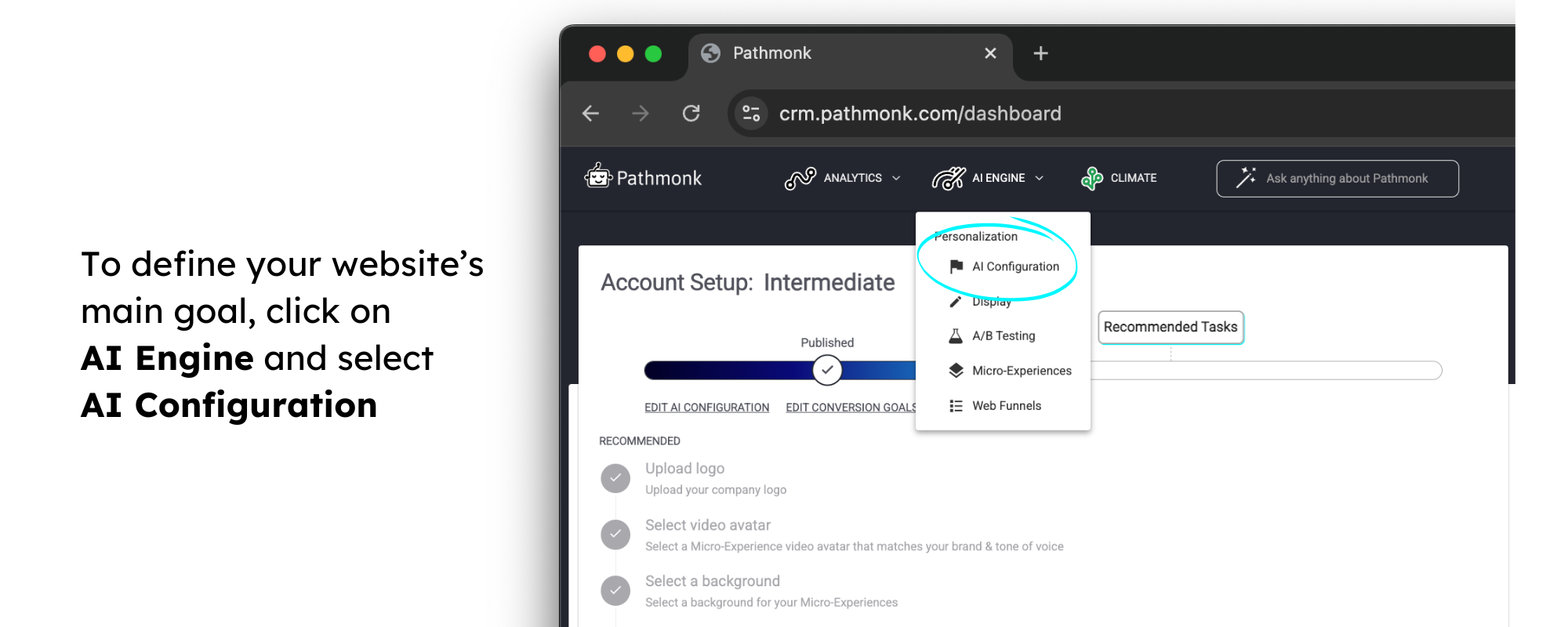
Ask yourself: What action do you want visitors to take? Is it completing a purchase? Booking a call with your sales team? Signing up for a free trial? Clarifying this goal ensures the AI knows what to prioritize.
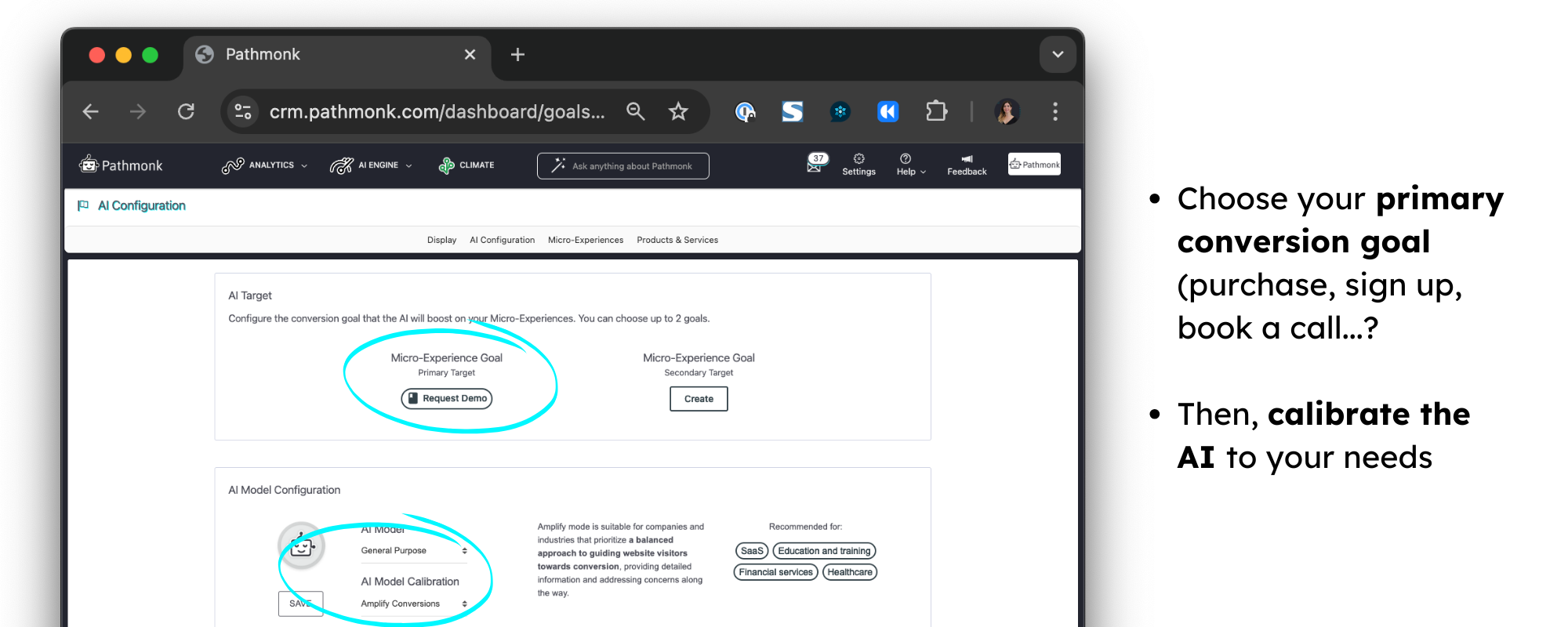
Next, choose the AI mode that fits your needs. This includes selecting the optimization speed and aligning with your growth model:
- E-commerce: Focus on personalized shopping experiences to drive sales.
- PLG (Product-Led Growth): Guide visitors toward exploring free trials or product features.
- SLG (Sales-Led Growth): Encourage actions like scheduling demos or calls.
These steps ensure that Pathmonk is perfectly tailored to your strategy from the start.
2. Let our AI create experiences for decision-stage visitors
Once everything is set up, Pathmonk’s AI takes over, creating engaging and personalized experiences to seamlessly guide visitors already considering you. Some examples include:
- Book a sales call: Encourage visitors to take the next step by scheduling a quick, no-commitment demo or meeting, tailored to their specific interests or needs.
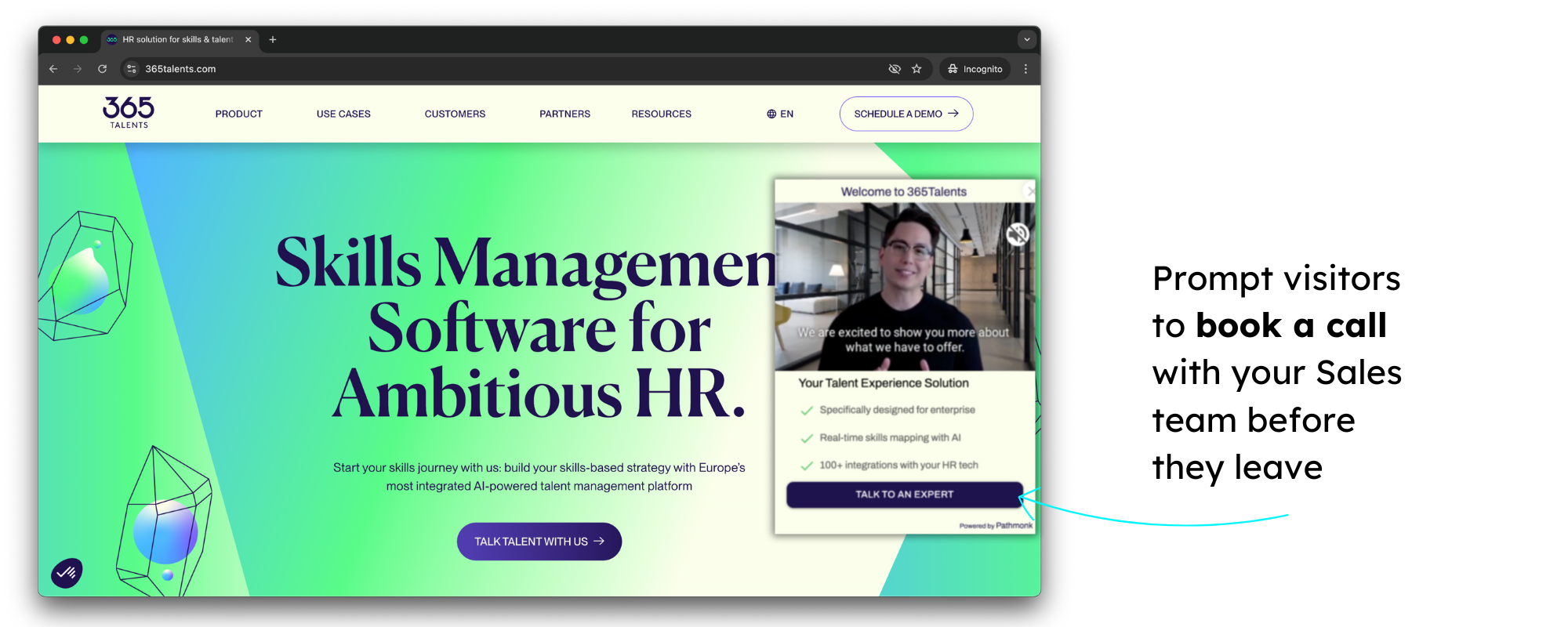
- Direct purchase: Simplify the path to purchase by offering a clear and easy checkout option for ready-to-buy visitors.
- Recommended product: Help visitors discover their challenges while connecting them to tailored content. For instance, a quiz can help potential buyers pinpoint the best solution for their needs.
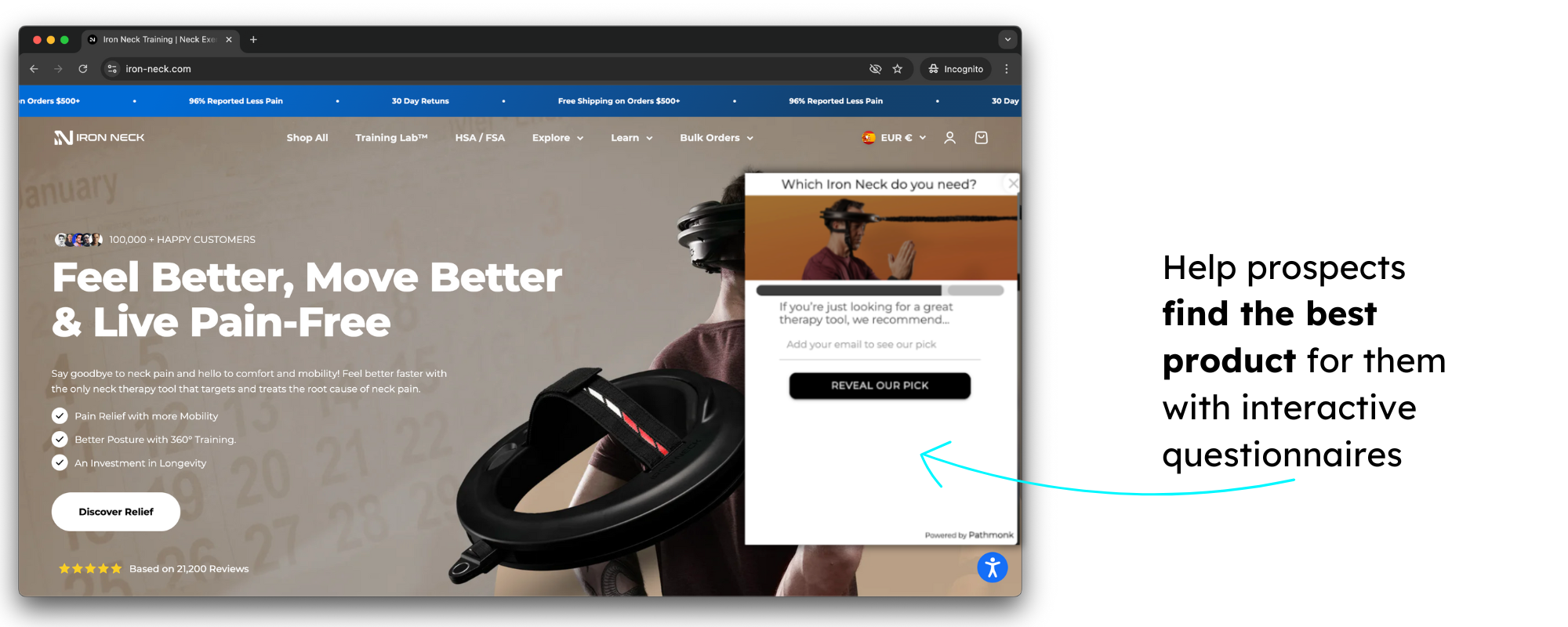
- Best-selling product: Showcase your most popular or best-reviewed product as a clear, trusted choice to encourage conversions.
Additionally, if Pathmonk detects the visitor still needs some reassurance despite being in the decision stage, it will display experiences like:
- Dynamic FAQ pop-ups: Provide answers to commonly asked questions, such as pricing details or product compatibility, directly on pages where visitors tend to linger. This removes barriers to decision-making without needing them to navigate elsewhere.
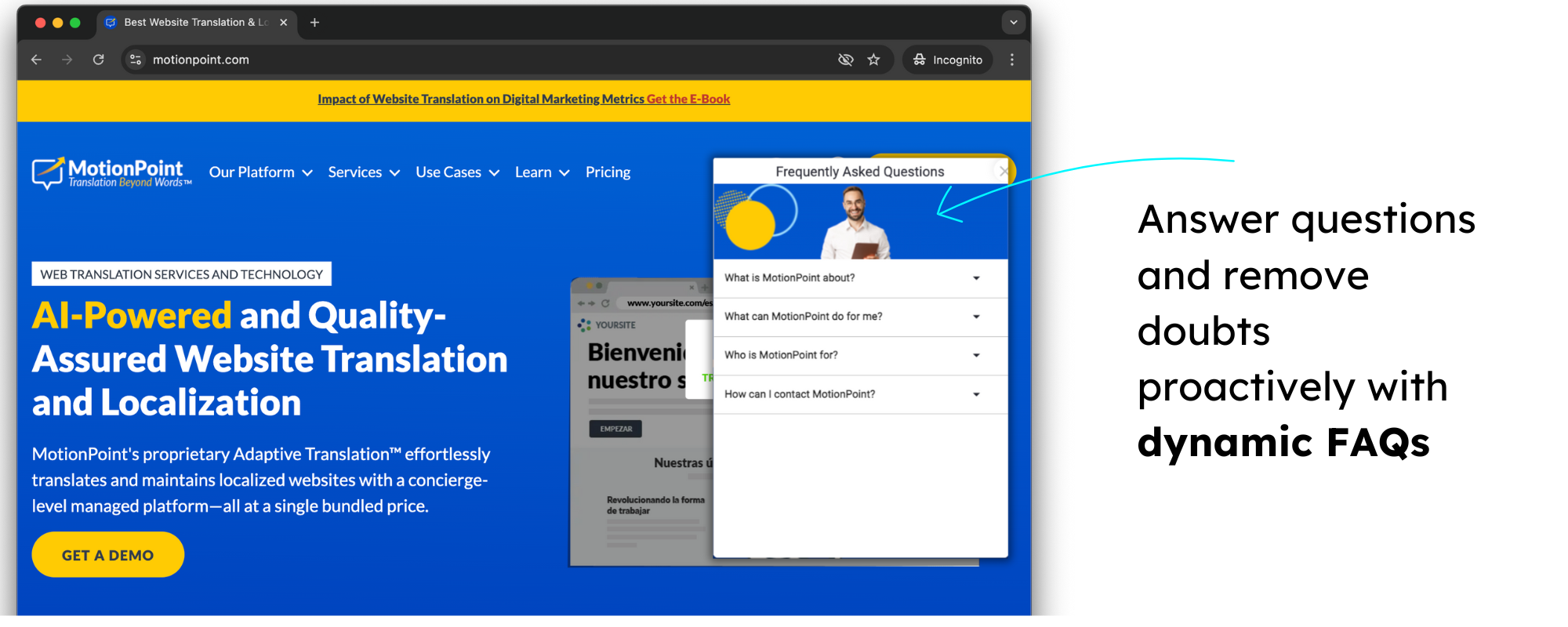
- Social proof and testimonials: Dynamically display relevant testimonials, reviews, or case studies based on the visitor’s browsing behavior. For example, a visitor looking at an enterprise solution page might see quotes from high-profile clients or statistics that demonstrate proven results, building credibility and trust.
- Certifications and awards: Highlight your credibility with certifications, recognitions, or badges from platforms like Capterra, G2, or other industry-specific awards. For instance, prominently displaying a “Top-Rated on Capterra” badge reassures visitors about the quality and reliability of your solution.
Each of these experiences is designed to meet visitors where they are, offering value without being pushy.
3. Need a tweak? Full onboarding support
Pathmonk doesn’t leave you hanging after the setup. Whether you need to refine your microexperiences, adjust your content, or add a custom touch, full onboarding support is available to guide you. You’ll also have the flexibility to tweak your settings and personalize your interactions as your goals evolve.
Increase +180%
leads
demos
sales
bookings
from your website with AI
Get more conversions from your existing website traffic delivering personalized experiences.
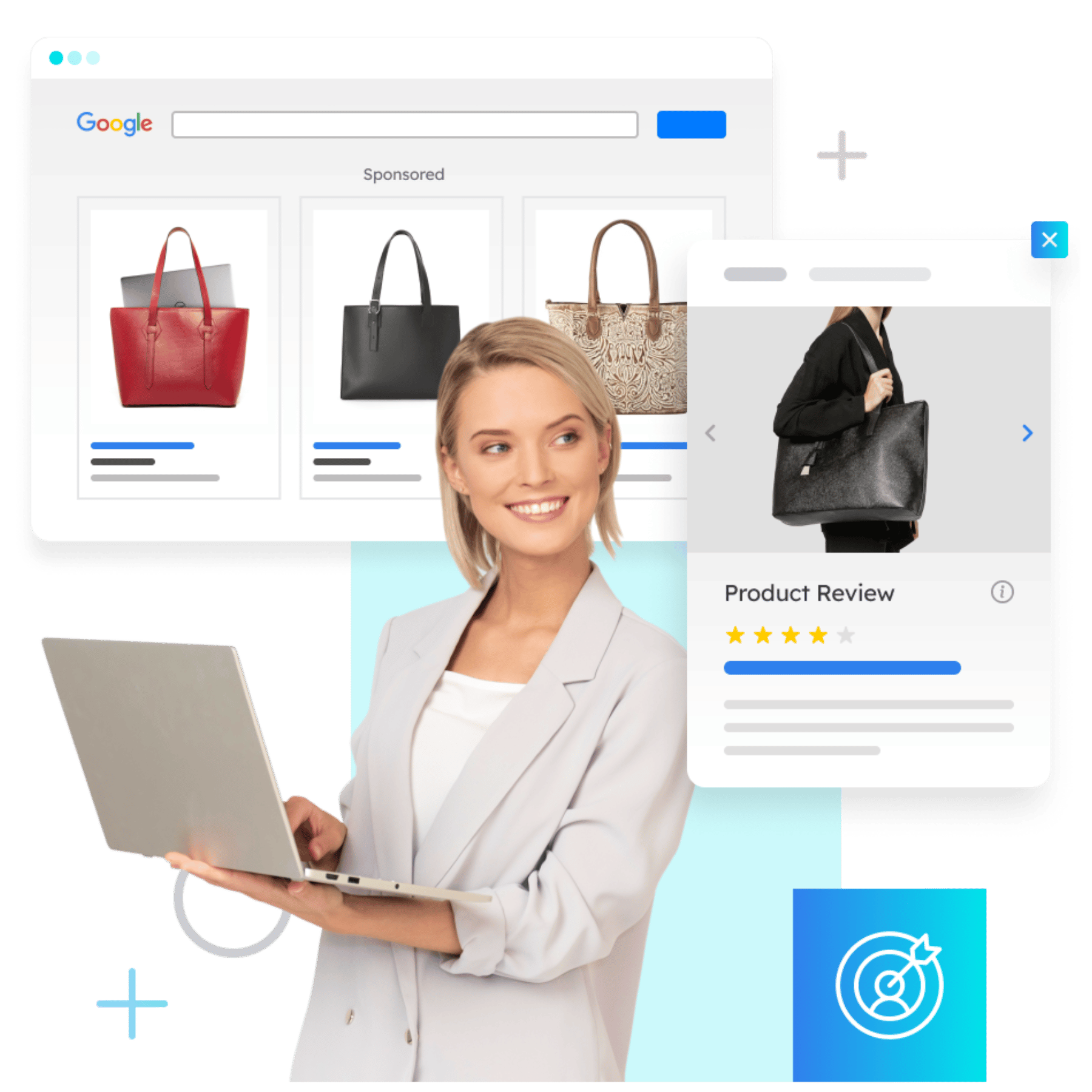
What is the decision stage?
The decision stage is the final step in the customer journey, where visitors are ready to make their choice. By now, they’ve identified their problem, explored their options, and narrowed their focus. They know what type of solution they need, and the question becomes: Who should I trust to deliver it?
At this stage, visitors aren’t looking for more education or exploration—they’re seeking confidence. They want specific details that confirm they’re making the right decision, such as transparent pricing, testimonials, case studies, or guarantees.
It’s not about convincing them that they need a solution—it’s about proving why your solution is the best fit for them.
Think of it like someone standing in front of two restaurants, menus in hand. They’ve already decided to eat—they just need that final nudge to choose which door to walk through. Maybe one has glowing reviews posted outside, or a friendly host offers a sample. Those little moments of reassurance make the decision easy.
For businesses, the decision stage is about removing friction. Visitors at this point are action-oriented, but they’re also highly sensitive to anything that might cause hesitation. A confusing pricing page, unanswered questions, or even a slightly clunky user experience can be enough to derail their decision.
So, TLDR about the decision stage:
- It’s all about taking action: Visitors are ready to choose. They need clear information—pricing, reviews, guarantees—to finalize their decision.
- Trust closes the deal: Testimonials, case studies, and assurances (like free trials or money-back guarantees) help overcome last-minute hesitations.
- Keep it simple: Don’t clutter the path to conversion. Make the next step easy and obvious, so visitors feel confident moving forward.
Why most brands fail to convert visitors in the decision stage
When a visitor reaches the decision stage, it might feel like the hard work is done. They’ve already identified their problem, researched solutions, narrowed down their options, and they’re clearly leaning toward your brand. It’s easy to assume their commitment is a done deal. But this assumption is exactly why so many brands stumble here.
1. Ignoring last-minute objections
Even at the decision stage, doubts creep in. Visitors might worry about cost, ease of implementation, or whether the product will deliver the results they expect. Brands that pretend these objections don’t exist miss a critical opportunity to convert.
Imagine someone considering a subscription service. If there’s no mention of cancellation policies or a free trial, they might assume it’s a hassle to back out. Addressing these last-minute objections—whether through FAQs, guarantees, or offering live support—helps visitors feel confident moving forward. If you don’t tackle their concerns head-on, they’re likely to look elsewhere.
2. Information is unclear or overwhelming
Decision-stage visitors don’t want to be bombarded with a wall of text or left searching for key details. They’ve already done their research—they’re not here for a sales pitch. What they need now is a clear, straightforward explanation of how your product or service meets their needs better than the alternatives.
For example, a messy pricing page with hidden fees or a complicated comparison chart can turn visitors away. Instead of helping them make a choice, you’re giving them reasons to second-guess. The decision stage is all about clarity: make sure your information is simple, organized, and easy to digest.
3. Failure to build trust during purchase
Visitors in the decision stage are ready to commit, but they need reassurance before taking the leap. If your website lacks testimonials, case studies, or social proof, you leave them questioning whether you’re the right choice. At this stage, trust isn’t earned through vague promises—it’s built with proof.
Think of it this way: if you’re considering buying a new phone, you’ll want to see reviews, user experiences, and possibly even a side-by-side comparison of specs. Without these, you’re left guessing—and that guesswork often leads people to pick a competitor who’s more transparent.
4. Relying too much on pushy tactics
Nobody likes to feel pressured into a decision, especially when it’s an important one. Over-the-top countdown timers, aggressive pop-ups, or constant “Act now!” messages can backfire at this stage. Visitors who feel rushed are more likely to abandon their cart than commit.
Instead, create urgency through value. For example, highlight how starting today will get them faster results or let them lock in a discount. The key is to keep the tone helpful, not desperate—decision-stage visitors respond to confidence, not pressure.
How Pathmonk converts visitors in the decision stage
Converting visitors in the decision stage requires precision. At this point, they’re no longer exploring options—they’re deciding which brand to trust. Pathmonk excels in guiding decision-stage visitors by addressing doubts, providing timely reassurance, and creating seamless interactions that drive conversions.
Behavioral analysis: addressing intent in real-time
Pathmonk’s AI understands the nuances of decision-stage behavior, focusing on identifying and resolving hesitations. Unlike traditional tools that rely on generic workflows, Pathmonk analyzes every step of the customer journey and then delivers interactions tailored to high-intent behaviors, ensuring visitors feel confident in their choice.
For example:
- A visitor lingers on the pricing page but doesn’t take action. Pathmonk might offer a calculator tool to help them see exactly how much they’ll save with your solution.
- Someone clicks on testimonials but doesn’t move forward. Pathmonk could present a relevant case study or highlight industry-specific results to validate their decision.
- A visitor revisits your checkout or demo page but doesn’t complete the process. Pathmonk may display a gentle prompt offering a money-back guarantee or direct access to the support team to overcome lingering doubts.
By reading visitor intent in real-time, Pathmonk ensures every interaction is meaningful and directly addresses decision-making roadblocks.
Automatically personalized experiences
Pathmonk takes personalization to the next level in the decision stage by offering microexperiences that align with the visitor’s journey. These real-time adjustments provide the final nudge needed to turn interest into action without feeling intrusive or pushy.
Here’s how they work:
- A visitor browsing your pricing page might see a prompt to download a pricing breakdown or comparison guide.
- Someone reviewing product features could receive a tailored banner highlighting a time-sensitive discount or free trial.
- A returning visitor might be greeted with an offer to speak directly with a specialist to finalize their decision.
These targeted experiences remove friction and build trust, making it easier for visitors to feel confident about moving forward.
Providing clarity and reassurance
The decision stage is all about removing doubts and making the choice feel effortless. Pathmonk ensures that visitors receive the right support at the right moment to reinforce their decision.
For example:
- After a visitor clicks on a case study, Pathmonk might suggest scheduling a demo to see those results in action.
- Someone spending time on FAQs could receive a tailored message like, “Still have questions? Chat live with our expert now.”
- A visitor hovering over the checkout page could be reassured with a message about free setup or flexible payment options.
What sets Pathmonk apart is its ability to create seamless, confidence-building experiences without overwhelming visitors.
The results:
What are the benefits of using Pathmonk to optimize your customer journey?
There are many CRO tools out there, but Pathmonk stands out because it doesn’t just focus on conversions—it optimizes the entire customer journey.
Here’s why our customers have switched from platforms like Mutiny or Dynamic Yield to Pathmonk:
1. Real-time optimization
Pathmonk reacts to visitor behavior instantly, ensuring every interaction aligns with their intent. There’s no waiting for manual updates or pre-set triggers—your website stays dynamic, adapting in real time to meet visitors where they are.
2. Fully automated—no manual work required
Forget about spending hours setting up campaigns or tweaking experiences. Pathmonk handles everything for you, from analyzing behavior to creating personalized interactions. It’s a plug-and-play solution that lets you focus on strategy while the platform does the heavy lifting.
3. Non-intrusive and user-friendly
Visitors in the consideration stage don’t want to feel pressured or bombarded. Pathmonk ensures a seamless experience with subtle, helpful interactions that build trust instead of pushing for a sale. It’s about guiding, not interrupting.
4. Cookieless technology for privacy compliance
With increasing privacy concerns, Pathmonk uses cookieless tracking to deliver precise insights without compromising visitor trust. It’s fully compliant with data privacy regulations, making it a future-proof solution for businesses looking to build credibility.
5. Effortless integrations
Pathmonk integrates with all the tools you already rely on—CRMs, email platforms, and more. Whether you need to sync leads, track performance, or improve retargeting, Pathmonk fits seamlessly into your workflow without disrupting what’s already working.
How SmarterStore increased 178% purchases optimizing the decision stage
SmarterStore, an Italian e-commerce company specializing in mobile phones and hi-tech accessories, faced decision-stage challenges. Despite attracting significant website traffic, many visitors struggled with decision fatigue caused by a vast catalog of products, leading to delayed purchases and low conversion rates.
Key challenges included:
- Customer decision fatigue: Visitors felt overwhelmed by too many product options, making it harder to finalize purchases.
- Prolonged decision-making: Lengthy selection processes caused drop-offs.
- Lack of actionable insights: SmarterStore couldn’t identify why visitors hesitated or how to guide them.
To address these issues, SmarterStore partnered with Pathmonk to streamline the decision stage and create a more supportive buying experience.
Pathmonk’s approach focused on:
- Simplifying choices: Pathmonk implemented a personalized website funnel, guiding visitors through curated questions to narrow their options and make confident decisions.
- Building trust: Timely reviews and product feedback were highlighted to reassure visitors about product quality.
- Providing actionable guidance: Hesitant visitors were engaged with dynamic prompts, such as support offers or exclusive discounts, encouraging them to move forward.
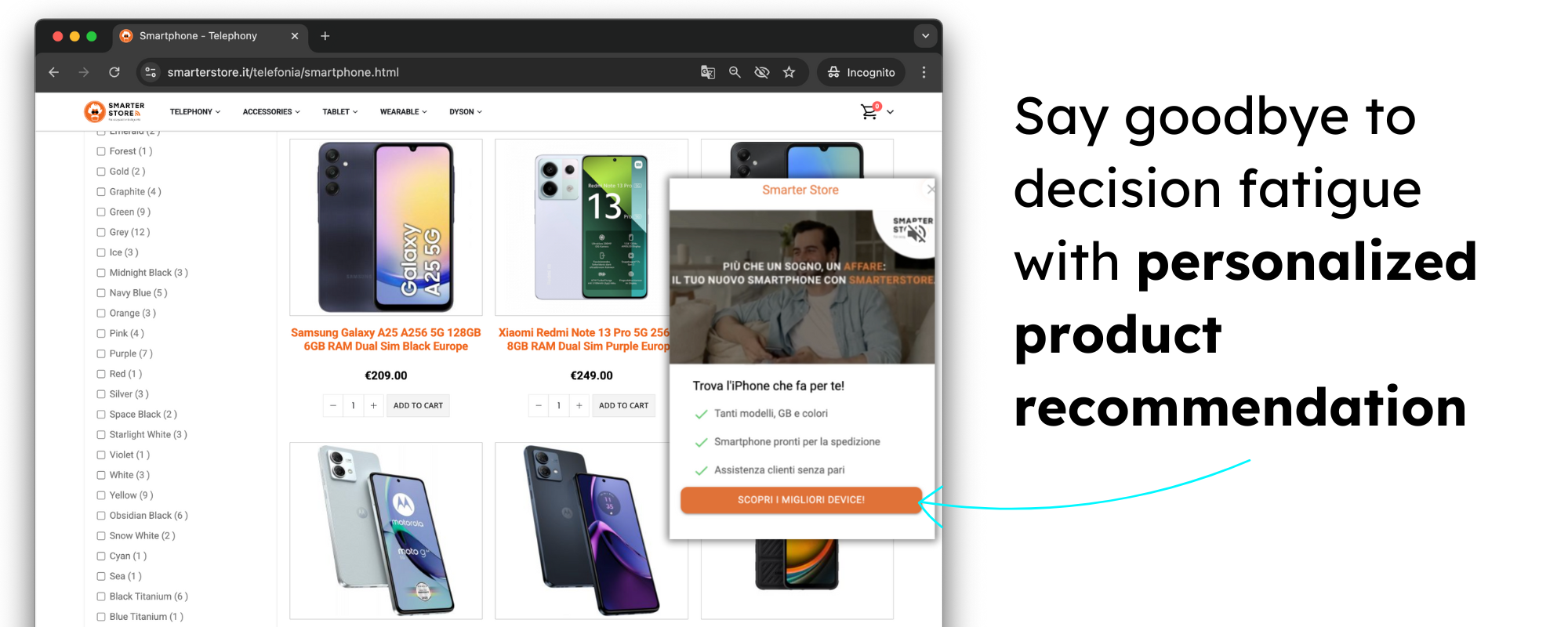
The results underscored the impact of optimizing the decision stage:
- 178% increase in purchases, driven by streamlined decision-making and timely guidance.
- Enhanced engagement at critical moments, with visitors interacting with personalized content and CTAs.
SmarterStore’s success shows how simplifying choices, addressing hesitations, and delivering personalized experiences can transform the decision stage into a powerful driver of sales.
How to add Pathmonk to your marketing strategy
Step 1: Set up your Pathmonk account
Setting up your Pathmonk account is straightforward and hassle-free. Here’s how to get started:
- Preview with our interactive demo: If you prefer to see how Pathmonk will work on your website before making a commitment, take advantage of our personalized interactive demo. This allows you to explore the features and benefits at your own pace.
- Schedule a demo call: For those who prefer a more personalized touch, you can schedule a call with our team for a tailored product demo. We’re here to answer any questions and help you understand how Pathmonk can specifically benefit your business.
To get started, simply visit our Pricing page and select the plan that fits your needs. We charge based on the pageviews your website receives, ensuring you only pay for what you need.
Step 2: Implement your cookieless snippet
After purchase, you will receive a unique Pathmonk snippet. This is a simple copy-and-paste action, which can be done through your platform’s backend or with Google Tag Manager installation instructions.
Step 3: Automatically create website experiences:
Pathmonk will utilize your existing website content to automatically generate personalized microexperiences for your visitors.
These microexperiences are tailored to engage users and guide them towards conversion, leveraging Pathmonk’s AI to optimize the customer journey seamlessly.





